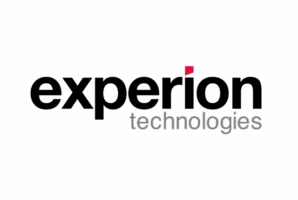Lone Star Analysis is gearing up for an accelerated growth phase.
As a provider of leading-edge predictive and prescriptive analytics and artificial intelligence solutions, Addison-based Lone Star assists companies in making informed decisions in the face of uncertainty. They service customers in need of a highly specific prediction, or family of predictions, that accompany prescriptions, or various courses of action.
“We believe that we’re one of the largest analytics organizations in the United States,” Chairman and CEO Steve Roemerman told Dallas Innovates. “We can make predictions farther in the future, with more precision than you think is possible.”
More than ‘a picture of your rearview mirror’
According to Roemerman, most analytics companies today give “a picture of your rearview mirror.” They take data from the past and see what’s useful.
Lone Star is more about “looking out into the future,” while postulating alternate futures depending on which decisions are invoked. It’s about transforming the data into actionable steps that achieve performance optimization.
Its services solve complex problems across a myriad of industries—manufacturing, aerospace, defense, energy, logistics, transportation—making for a diversified customer base of Fortune 500 clients.

Steve Roemerman [Photo: Lone Star Analysis]
But its stature has been nearly two decades in the making. Since its founding in 2004, Lone Star’s tech has kept pace with advancements in the market.
Take its Evolved AI, for instance. Described as a hybrid solution that’s “more powerful than conventional AI,” Evolved AI blends multiple artificial intelligence components to maximize uptime for critical assets. It’s an opportunity the Lone Star team is most excited about—AI is peaking, and they think “a new generation is poised to go forward from here.”
In all, the company’s IP portfolio of more than 70 owned or shared patents has one goal: Help organizations become more successful by enabling them to make informed decisions as they face unpredictability in the future and in their data.
“Lone Star’s technology improves confidence and reduces uncertainty in critical business decisions, big and small,” Roemerman says. “We enable companies to improve operational and financial performance.”
It’s a tall task, but the team of 115 full-time employees is up for any challenge, Roemerman says. Armed with a fresh round of funding that follows an initial investment from 2019, Lone Star is now on pace for more than 40 percent growth this year and has plans to more than double in size in the next two.
Roemerman believes this type of expansion is sustainable, especially as Lone Star widens its tech footprint into additional business sectors.
Lone Star closes new funding
The investment in 2019 came from HCAP Partners, a provider of mezzanine debt and private equity for underserved, lower-middle market companies in the healthcare, software, services, and manufacturing industries.
Fast forward a couple years and the two have built a solid working relationship that eventually led to HCAP exercising its full purchase option. The deal was announced this week, and the terms were not disclosed.
The additional financial strength opens doors for Lone Star, according to Roemerman. HCAP’s funding will go to research and development for novel enterprise software, along with possibilities for new customer communities.
“Our base business is not cash hungry; we’re not a cash negative operations unit. But we’ve got a bunch of opportunities that do require cash to start the new opportunity,” Roemerman says. “When we did the first part of this deal, it was very clear to us that we that we really needed growth capital to get to the next level.”
One example of that was Lone Star’s recent launch of a subsidiary in the U.K., where the company already had several customers. Roemerman also says there’s potential for an acquisition this year to fuel more inorganic growth.
With the revival of oil & gas, the team says defense sectors are prime right now.
It’s mission critical
Lone Star is a B2B outlet that focuses on large organizations. Some are government agencies, while others are complex enterprises. But, Roemerman says, an ideal customer is anyone with large mission-critical assets.
“Most of our customers have been on an analytic journey where they begin to think about their data, and they have done some assessment and learning from that,” Roemerman says. “And if they’re managing a big enterprise or if they’re running expensive assets, they begin to realize that it would really be good to know what’s going to happen out in the future. And that’s when a customer is qualified for us.”
For example: Lone Star provides real-time monitoring for vehicles in the City of Addison. The level of criticality for an ambulance is different than, say, a Parks and Recreation vehicle, but it all comes down to making sure everything is kept running smoothly.
Keeping the oil flowing
On the other end of the critical asset spectrum would be an electric submersible pump for an oil operator out in the Permian Basin. The amount of data the pumps provide is extremely limited, but they generate some 1,000 barrels of oil a day.
That means the oil has to be kept flowing. As Roemerman puts it, “that’s critical to the lifeblood of your enterprise.”
It’s Lone Star’s job to think ahead. How long will the pump operate? Could it be modified? When does a replacement need to be ordered to avoid hotshot fees?
Lone Star’s prescriptions would enable the enterprise to make more money, flow more cash, and have lower maintenance costs.
“The savings that come from asset management of that nature, it compounds,” Roemerman says. “We generate really big ROI. Our customers will typically save $20 for every dollar they spend with us as kind of a minimum. We’ve got some people where the ratios are so vast, it costs almost nothing to do the analytics. They save millions of dollars.”
A highly complex enterprise the CEO points to is a customer with a large aircraft fleet. Management of that involves analyzing each aircraft, how it’s being used, it’s flying, and what kind of weather it’s traveling in, along with looking into maintenance operations in different states.
“That’s a different problem than the asset look of thinking about a pump or a truck,” Roemerman says.
Behind it all
Roemerman—who started the company with Matthew Bowers and John Volpi and has held the CEO title since—credits Lone Star’s success to the niche way he and his co-founders have set up their team.
The foundation of Lone Star’s employees is augmented by a larger group of subject matter experts.
“The first thing that we realized when we built the company was that we couldn’t go offer a broad range of services to a broad range of customers with the staff size we had,” Roemerman says. “If you go look at analytics or data science cadres, even in very large corporations, it’s pretty unusual to see a staff of more than about 15 or 20. And they’re very hard to recruit.”
The way Lone Star got around that is by building up a pool of subject matter experts, which currently number around 1,500, that serves to help specific customers on a case-by-case matter.
The second answer rests in Lone Star’s no-code solution base. “We can bring somebody in on day one and they can be a productive analyst within a couple of weeks without ever writing a line of code,” Roemerman says.
“That means we can recruit from a broader base than most folks who are trying to do the kind of advanced analytics that we do.”
At Lone Star’s headquarters in Addison, the chief executive have fostered an environment that gives employees the chance to work on a variety of problems, to improve customers’ top and bottom lines. That makes the company “pretty effective at competing for talent.”
“We technology-enable people instead of asking them to be graduate-level computer science,” Roemerman says. “Creating a better employee experience enables us to scale our analytics talent in a way that a lot of other people are struggling with.”
![]()
Get on the list.
Dallas Innovates, every day.
Sign up to keep your eye on what’s new and next in Dallas-Fort Worth, every day.































